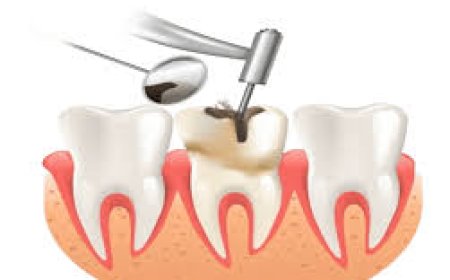Root Canal Treatment in Oshawa: Everything You Need to Know
Need root canal treatment in Oshawa? Our experienced dentists provide gentle, effective, and pain-free root canal procedures to save your natural tooth.

If you have a deep toothache thatwont go away, youre not alone. Many people put off going to the dentist because theyre afraid of the pain or dont know whats causing the problem. In many cases, the real issue is inside the tooth, not just on the surface. Thats when a root canal treatment in Oshawa can help. This dental procedure can stop the pain and save your natural tooth, without needing to pull it out.
Lets walk through what a root canal is, when you might need one, how it works, and what you can expect.
What Is a Root Canal?
A root canal is a simple dental treatment that removes infected or damaged pulp from the inside of your tooth. The pulp is soft tissue found in the center of each tooth. It holds blood vessels and nerves. When it gets infected or inflamed, it can cause sharp pain, swelling, or even an abscess.
This treatment helps clean out the infection, ease the pain, and protect the tooth from future problems. Many people think it hurts, but modern root canal procedures are much more comfortable than they used to be.
Why You Might Need One
You may not always feel it right away, but here are a few signs you might need this kind of treatment:
-
Pain when chewing or biting
-
Lingering sensitivity to hot or cold
-
A chipped or cracked tooth
-
Swollen gums near the problematic tooth
-
Darkening of the tooth
Most of the time, the pain starts small and grows worse. Thats why it's best not to wait. If you notice any of these signs, its time to see your dentist. The longer you wait, the more damage can occur, and that could lead to losing the tooth.
What Causes the Infection?
Infections in the pulp usually happen for one of the following reasons:
-
Deep tooth decay
-
Repeated dental procedures on the same tooth
-
A crack or chip that lets bacteria inside
-
An injury to the tooth, even if theres no visible damage
Once bacteria enter the pulp, they can spread fast. This is why acting early can make a big difference. With the right treatment, you can keep your natural tooth and stop the pain from getting worse.
What Happens During the Procedure?
A root canal is usually done in one or two visits. Your dentist will walk you through the steps, but heres what generally happens:
-
Numbing the Area: Your dentist will use local anesthesia so you wont feel anything during the procedure.
-
Opening the Tooth: A small opening is made at the top of the tooth to reach the pulp inside.
-
Removing the Infected Tissue: The dentist takes out the damaged pulp, cleans the inside of the tooth, and shapes the canals.
-
Sealing the Tooth: After cleaning, the inside of the tooth is filled with a special material to stop bacteria from coming back.
-
Final Restoration: In most cases, a crown is placed on top to protect the tooth and restore normal use.
The whole thing can take 60 to 90 minutes, depending on how complex the tooth is. Most people say it feels just like getting a regular filling.
Is It Painful?
This is one of the biggest fears people have. But heres the truth the pain you feel before the treatment is worse than anything during it. Once the area is numb, you wont feel the work being done.
After the treatment, you might feel some tenderness for a few days. Over-the-counter pain relievers usually work fine. Your dentist might also give you some tips or medicine to help with healing.
What to Expect After
Once the treatment is done, youll want to be gentle with that side of your mouth for a few days. Avoid hard or crunchy foods until your dentist says its safe. Brush and floss carefully, and keep up with regular dental checkups.
In most cases, your tooth will feel and work like normal again. The crown placed on top adds strength and helps the tooth last longer.
Can the Tooth Last After the Treatment?
Yes. Teeth that have had this procedure can last for many years, even for life. The key is to keep good oral habits, see your dentist regularly, and avoid chewing hard objects like ice or pens.
Sometimes, if the inside of the tooth gets re-infected, another treatment may be needed. But this is not common if the first treatment is done well and the tooth is protected afterward.
What Are the Benefits?
Here are a few good reasons to go through with this treatment:
-
Keeps your natural tooth in place
-
Removes pain and infection
-
Helps you chew and bite like before
-
Stops the infection from spreading
-
Keeps your smile looking normal
Pulling a tooth may seem easier, but it can cause more problems in the long run, such as shifting teeth, jaw bone loss, or needing a replacement like an implant or bridge.
How to Avoid Needing One
Good habits can help you avoid tooth infections in the first place. Here are a few tips:
-
Brush twice a day with fluoride toothpaste
-
Floss daily to remove food and plaque between teeth
-
Dont skip dental cleanings every six months
-
Get small problems fixed before they become big ones
-
Wear a mouthguard if you grind your teeth or play contact sports
These steps wont stop every problem, but they reduce your chances of needing complex dental work.
When to See a Dentist
If you feel sharp pain, notice a bump on your gum, or feel extra sensitivity to heat or cold, book an appointment right away. You dont need to live with the pain or risk losing a tooth. Your dentist can check whats wrong and suggest the best next step.
The earlier the issue is found, the easier the fix.
Stop Tooth Pain and Save Your Smile
A root canal treatment in Oshawa is a safe and helpful way to treat tooth infections without losing your tooth. It can stop pain, clean out the infection, and restore your tooth's health. If you're looking for a trusted clinic in the area, Groot Dental has skilled professionals who can walk you through each step and make sure you're comfortable throughout the process.
Don't wait until the pain gets worse. A quick visit can save your tooth and your peace of mind.






























